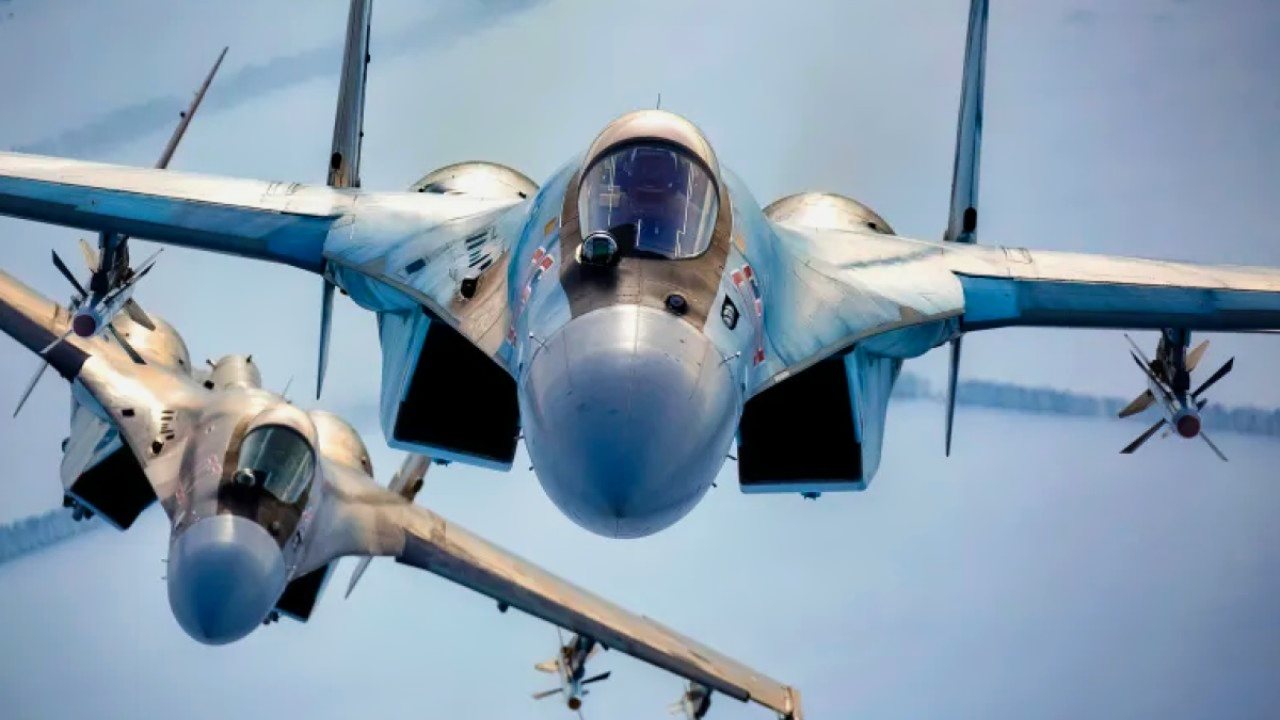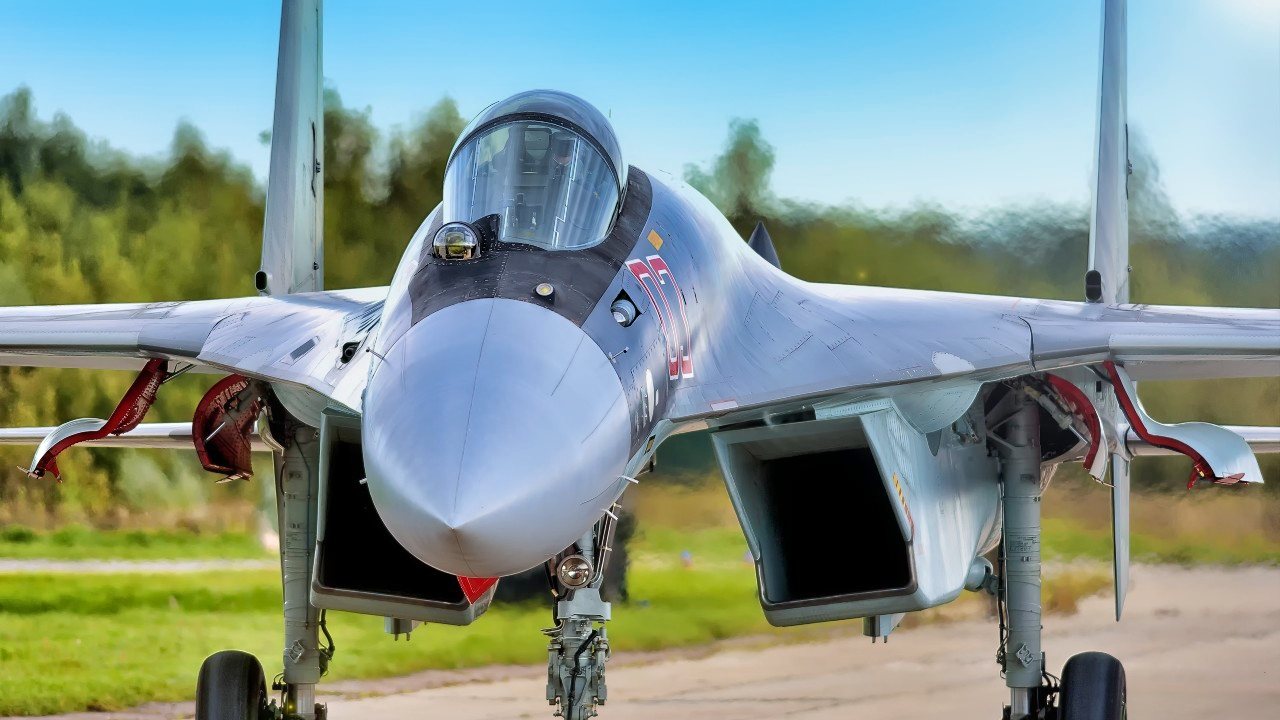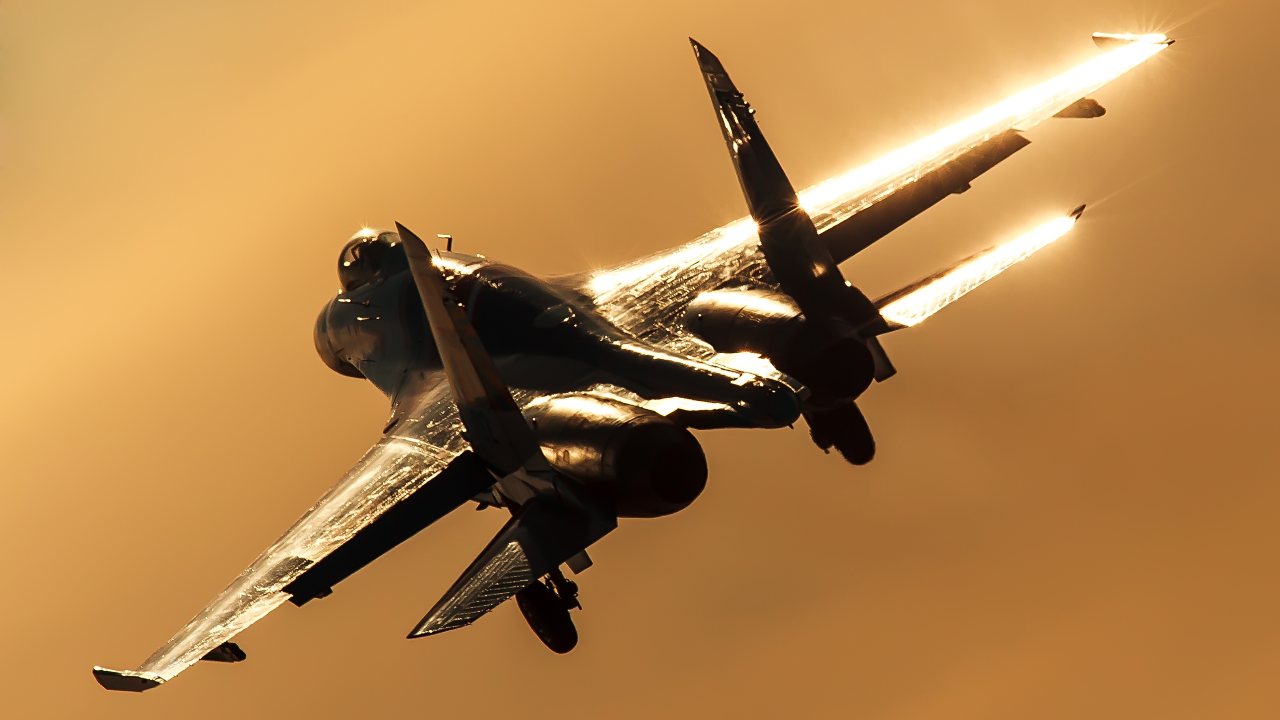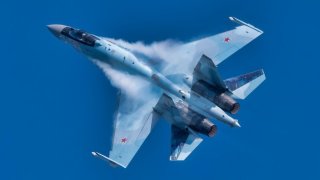Russia's Su-35 Fighter Is Getting Knocked Out of the Sky in Ukraine War
Russia is increasing production of Su-35 and Su-57 fighters to bolster its aerospace capabilities, but Su-35s have underperformed in Ukraine, with many shot down by advanced Western weaponry like the Patriot missile system.
Summary and Top Line Points You Need to Know: Russia is increasing production of Su-35 and Su-57 fighters to bolster its aerospace capabilities, but Su-35s have underperformed in Ukraine, with many shot down by advanced Western weaponry like the Patriot missile system.

-Despite their advanced specs, the Su-35s have proven vulnerable.
-Russia has lost a significant number of these and other aircraft since the invasion began, challenging their air superiority.
Russia Ups Production of Su-35 and Su-57 Fighters Amid Ukraine Conflict
According to reports months back from the Komsomolsk-on-Amur plant, a steady uptick in the production of Su-35 and Su-57 fighters will bolster the Russian Aerospace Forces’ capabilities. While extra airframes will certainly help replenish Moscow’s hard-hit fleet amid its invasion of Ukraine, Su-35s have not performed well in the conflict. Armed with sophisticated Western-delivered weaponry, Ukrainian forces have shot down many of these Soviet-era fighters.
The Ukrainian Defense Ministry announced earlier in the year that its forces had shot down at least seven Sukhoi glide-bombers earlier this year using American-made Patriot missiles. The Kremlin takes every chance it gets to tout its “fourth generation ++” fighters as superior jets, but they have yet to prove that title.
An Overview of the Su-35
Moscow’s twin-engine supermaneuverable Su-35 platform is an evolution of the Soviet Su-27 Flanker. The Soviet planners who oversaw the program wanted a new fighter capable of going up against American fourth-generation jets like the McDonnell Douglas F-15 Eagle and Northrop Grumman F-14 Tomcat.
The first Su-35 prototype (initially known as the Su-27M) took its maiden flight in the early 1980s. As the platform progressed over the years, NATO gave it the moniker “Flanker-E.” Manufacturer United Aircraft Corporation describes the Su-35 as an airframe that “combines the qualities of a modern fighter (super-maneuverability, superior active and passive acquisition aids, high supersonic speed and long range, capability of managing battle group actions, etc.) and a good tactical airplane (wide range of weapons that can be carried, modern multi-channel electronic warfare system, reduced radar signature, and high combat survivability).”

Equipped with a dozen hardpoints for carrying external weapons and stores, the Flanker-E is a well armed platform. The fighter can carry a range of air-to-air and air-to-surface missiles, including the Vympel R-27, Molniya Kh-29, and the long-range Kh-58UShE. The Su-35 can launch the KAB-500Kr, KAB-1500Kr TV, and the KAB-1500LG laser-guided bomb. As detailed by Airforce Technology, the Russian platform also features countermeasures like a jammer and a radar warning system, and the Gryazev-Shipunov 30mm GSh-30-1 gun.
How Has the Flanker-E Fared in Ukraine?
Considering these specs and capabilities, the Flanker-E certainly should not be underestimated. However, these jets have suffered greatly in Ukraine. They are vulnerable to many Western air defense systems. In February alone, Moscow lost at least six of its 120 Su-35 airframes. According to Forbes, the rate at which Russia is losing its Flanker-E jets is “accelerating” and becoming “unsustainable.”
Ukraine’s supply of Patriot missiles is not infinite, though, so the country’s defense against Russian airframes might diminish down the line.

The Flanker-E is not the only Russian fighter struggling in the ongoing invasion. The General Staff of the Armed Forces of Ukraine has claimed the destruction of nearly 350 Russian aircraft since the war began back in February 2022. While this number cannot be exactly verified, documentation and footage suggest that Russia’s aerial fleet has shrunk significantly.
About the Author: Maya Carlin
Maya Carlin, National Security Writer with The National Interest, is an analyst with the Center for Security Policy and a former Anna Sobol Levy Fellow at IDC Herzliya in Israel. She has by-lines in many publications, including The National Interest, Jerusalem Post, and Times of Israel. You can follow her on Twitter: @MayaCarlin.
All images are from Shutterstock and/or Creative Commons.


